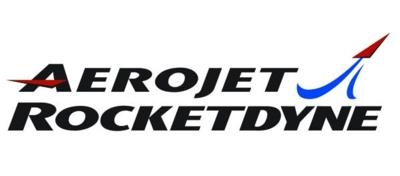Wed, Jun 25, 2014
Company Says '3D Printing' Can Make Engine Construction More Cost Effective
Aerojet Rocketdyne Aerojet recently successfully completed a series of hot-fire tests on a Bantam demonstration engine built entirely with additive manufacturing. The tests were a key step in the development of a more cost-effective engine family for booster, upper-stage and in-space propulsion.

"The demonstration of this engine, made completely with additive manufacturing, is another significant milestone in our path to changing propulsion affordability," said Jay Littles, director of Advanced Launch Propulsion Programs at Aerojet Rocketdyne. "We are not just making a stand-alone chamber or injector derived from traditional design approaches. Rather, we are integrating the full capability of additive manufacturing processes to evolve a proven, reliable, affordable design. We are doing so with technical depth and rigor to meet our unparalleled quality and safety requirements."
The engine, which is normally comprised of dozens of parts, consisted of only three additive-manufactured components: the entire injector and dome assembly; the combustion chamber; and a throat and nozzle section. This particular liquid oxygen/kerosene engine, dubbed "Baby Bantam" (because it is at the lower end of the Bantam engine family thrust range), has a thrust of 5,000 pounds. The Bantam engine family extends up to 200,000 pounds of thrust and can be adapted to use various fuels, including: kerosene, ethanol, methane and storable propellants.
The Bantam engine family is being adapted from the proven design of the Atlas Sustainer engine to take full advantage of additive manufacturing capabilities. The team also was able to reduce total design and manufacturing time from more than a year to a couple of months, reduce the cost of the engine by approximately 65 percent. This engine test was part of a multi-year Aerojet Rocketdyne additive manufacturing development effort that already has demonstrated successful process development, design tool evolution, component fabrication and component hot-fire tests.
More News
He Attempted To Restart The Engine Three Times. On The Third Restart Attempt, He Noticed That Flames Were Coming Out From The Right Wing Near The Fuel Cap Analysis: The pilot repor>[...]
Make Sure You NEVER Miss A New Story From Aero-News Network Do you ever feel like you never see posts from a certain person or page on Facebook or Instagram? Here’s how you c>[...]
From 2009 (YouTube Edition): Leading Air Show Performers Give Their Best Advice for Newcomers On December 6th through December 9th, the Paris Las Vegas Hotel hosted over 1,500 air >[...]
Aero Linx: NASA ASRS ASRS captures confidential reports, analyzes the resulting aviation safety data, and disseminates vital information to the aviation community. The ASRS is an i>[...]
“For our inaugural Pylon Racing Seminar in Roswell, we were thrilled to certify 60 pilots across our six closed-course pylon race classes. Not only did this year’s PRS >[...]
 NTSB Final Report: Rutan Long-EZ
NTSB Final Report: Rutan Long-EZ ANN FAQ: Turn On Post Notifications
ANN FAQ: Turn On Post Notifications Classic Aero-TV: ICAS Perspectives - Advice for New Air Show Performers
Classic Aero-TV: ICAS Perspectives - Advice for New Air Show Performers ANN's Daily Aero-Linx (06.28.25)
ANN's Daily Aero-Linx (06.28.25) Aero-News: Quote of the Day (06.28.25)
Aero-News: Quote of the Day (06.28.25)



